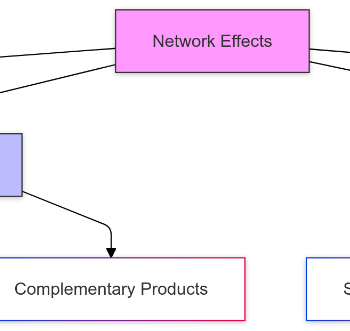What is a Flat Tax?
A flat tax is a tax system where a single tax rate is applied to all taxable income after deductions or exemptions. There are several types of flat tax systems:
- What is Nansen? Data Analytics Platform for Web3 Intelligence
- What is Network Effect? Analyzing Value Growth in Connected Systems
- Create a Comprehensive Financial Plan: Ultimate Guide for Secure Investments
- Unlocking the Future: A Comprehensive Guide to Digital Currency Investment and Trends
- Key Titles and Roles Within a Finance Firm: A Comprehensive Guide
-
True Flat-Rate Income Tax: This is the most straightforward form, where no deductions are allowed. Every dollar earned above the exemption amount is taxed at the same rate.
Bạn đang xem: How a Flat Tax System Works: Simplifying Income Taxation for Individuals and Businesses
-
Marginal Flat Tax: In this system, deductions are allowed, but once the maximum deduction is reached, a constant marginal rate applies to all additional income.
-
Flat Tax with Limited Deductions: This version allows for a few specific deductions such as charitable donations and home mortgage interest but maintains a single tax rate for all other income.
Each type has its own set of advantages and challenges, but they all share the core principle of simplicity.
How Flat Tax Works for Individuals
For individuals, the flat tax calculation involves applying the flat tax rate to taxable income after any allowed deductions or exemptions.
Tax Calculation
For example, if John and his family of four have an annual income of $100,000 and are allowed an exemption of $20,000 plus deductions for charitable donations and home mortgage interest totaling $10,000, their taxable income would be $70,000. If the flat tax rate is 20%, they would owe $14,000 in taxes.
Hall-Rabushka Flat Tax Proposal
The Hall-Rabushka proposal is a well-known variant that suggests wages be taxed at the individual level with an exemption based on family size. All value added except wages would be taxed at the business level. This approach aims to simplify taxation while ensuring fairness based on family size.
Regressivity Issue
One of the significant criticisms of flat taxes is their potential regressivity. Since lower-income individuals spend a larger portion of their income on necessities rather than savings or investments, they may end up paying a higher proportion of their income in taxes compared to higher-income individuals. This can lead to a disproportionate tax burden on those who can least afford it.
How Flat Tax Works for Businesses
For businesses, the flat tax system operates differently:
Business Tax Component
Firms pay taxes on sales after deducting wages, pensions, material costs, and capital investments. For instance, if ACME Inc. has sales of $1 million but deducts $600,000 in wages and $200,000 in material costs and capital investments, their taxable income would be $200,000. With a flat tax rate of 20%, ACME Inc. would owe $40,000 in taxes.
Integration with Other Taxes
A flat tax can also replace other taxes such as the estate tax, Obamacare taxes (if applicable), and the Alternative Minimum Tax (AMT). This integration simplifies the overall tax landscape for businesses by eliminating multiple layers of taxation.
Benefits of a Flat Tax System
One of the primary benefits of a flat tax system is its simplification. By reducing the number of tax brackets and eliminating many deductions and exemptions found in progressive systems, administrative costs decrease significantly. This simplicity also encourages compliance as taxpayers find it easier to understand and adhere to the tax code.
Economic Efficiency
A flat tax can improve economic performance by reducing incentives for tax evasion. With fewer loopholes and lower rates compared to some progressive systems, individuals and businesses are less likely to engage in complex tax avoidance strategies.
Fairness and Efficiency
Proponents like Hall and Rabushka argue that a flat tax is fair because it treats all income equally without favoring certain types over others. This fairness can lead to greater efficiency in economic activities as resources are allocated based on market principles rather than tax advantages.
Criticisms and Challenges
Xem thêm : What is MVB Most Valuable Builder? A Comprehensive Guide to Binance’s Blockchain Innovation Program
Despite its benefits, there are several criticisms and challenges associated with implementing a flat tax system:
Regressivity
As mentioned earlier, one major concern is regressivity. Lower-income individuals may face higher effective tax rates because they spend more of their income on necessities rather than savings or investments.
Loss of Tax Revenue
Lowering tax rates across the board could result in reduced tax revenue for governments. This could necessitate either increased borrowing or cuts in public spending.
Political and Social Implications
Implementing a flat tax system often faces significant political resistance due to concerns about social equity. There may be strong opposition from groups who benefit from current deductions or fear increased burdens under a new system.
Comparative Analysis with Other Tax Systems
To understand the implications better, let’s compare flat taxes with other common tax systems:
Progressive Tax
In progressive tax systems, tax rates increase as income levels rise. This contrasts sharply with the single rate of a flat tax system. Progressive taxes aim to redistribute wealth but can become complex due to multiple brackets and exemptions.
Regressive Tax
Flat taxes share some characteristics with regressive taxes where lower-income individuals pay a higher proportion of their income in taxes compared to higher-income individuals. However, unlike pure regressive taxes which often have higher rates on lower incomes explicitly designed into the system, flat taxes apply uniformly across all incomes after deductions.
Examples from Other Countries
Countries like Georgia and Bulgaria have implemented flat tax systems with varying degrees of success. These examples provide valuable insights into how such systems can be structured and managed in real-world scenarios.
Nguồn: https://staredecisis.quest
Danh mục: Blog





